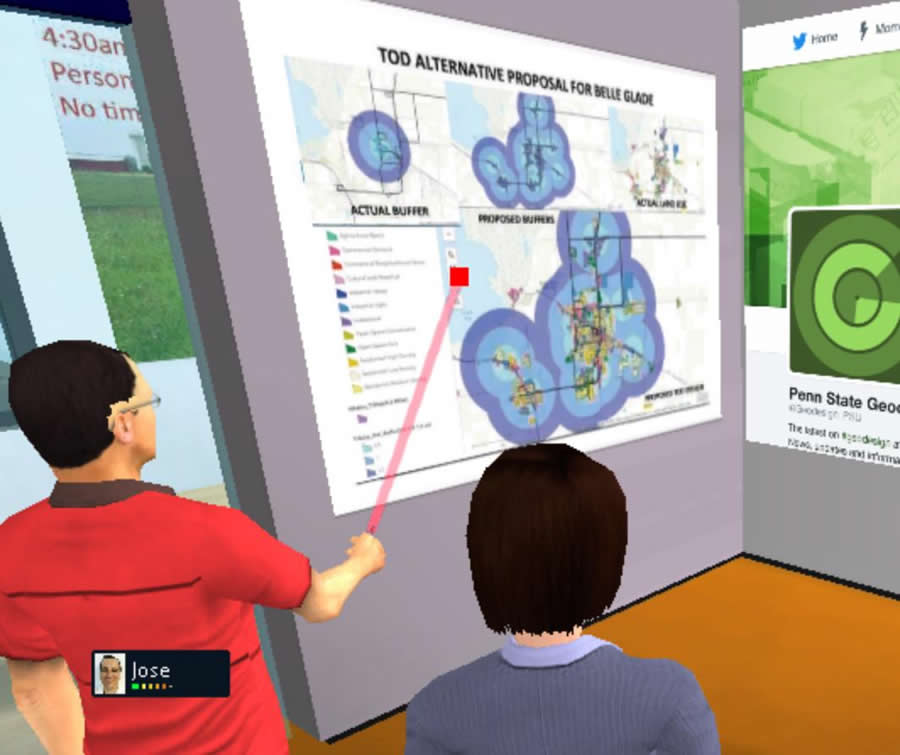
The student avatar in the blue shirt stood in a virtual classroom, flanked by faculty and fellow student avatars. He focused a red laser simulator at a digital map of Lee County, Florida, pointing out where land could be developed near mass transit and urban services in order to reduce development in areas that may be better suited to agriculture.
“Don’t take anybody’s eye out now,” joked a faculty avatar.
“I’ll try not to,” the student avatar said with a chuckle before continuing his transit-oriented development (TOD) presentation. “With increasing [housing] densities in the [transit] corridor, I think there’s a potential to consolidate the urban space and take [other] areas back to agriculture and cultivation.”
Welcome to the cloud-based environment for teaching geodesign at the Pennsylvania State University (Penn State) World Campus, where students learn to make what the university calls “geospatially oriented” design decisions. Students can earn either a 35-credit Master of Professional Studies in Geodesign degree or a 14-credit Graduate Certificate in Geodesign online, collaborating on assignments and making final presentations to faculty and classmates in a 2D/3D virtual classroom, such as Terf. Students and faculty also communicate using other Internet-based communication tools such as Skype and Yammer. It’s the next best thing to being together in one room.
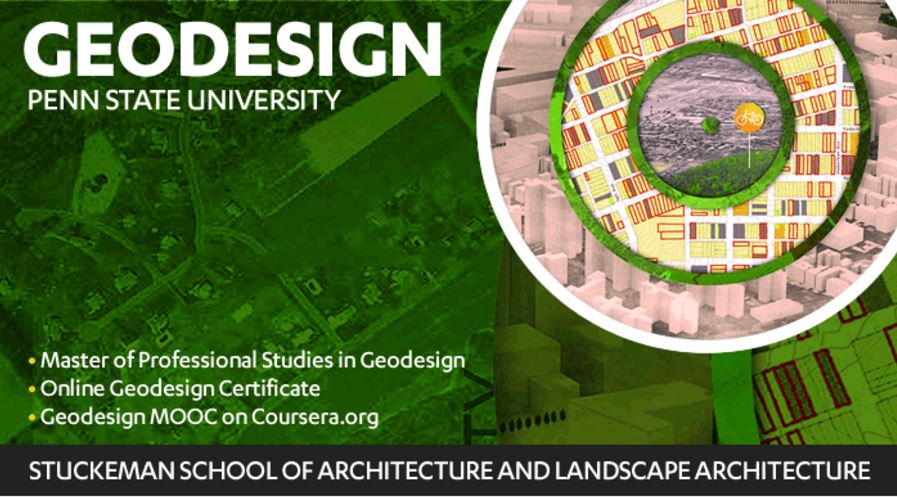
“All of our courses are offered online, so people can participate from wherever they are—they don’t have to relocate,” said Kelleann Foster, director of the Stuckeman School of Architecture and Landscape Architecture at Penn State and the faculty leader of the school’s geodesign program. “So much is happening in the cloud now that it has actually become easier to deliver the program online.”
The online geodesign program was designed for people who work in diverse fields—such as transportation planning, landscape architecture, sociology, hydrology, and urban planning—and who want to use what Foster calls “spatial problem solving” in design decisions.
“It’s geared toward working professionals who want to acquire new skills, advance their [careers], or shift gears,” she said. The time commitment is from 15 to 20 hours per week, Foster said. The Graduate Certificate in Geodesign program takes about a year to complete, while the Master of Professional Studies in Geodesign program usually takes from two and a half to three years.
The online education program is giving Greg King, a GIS consultant from Brisbane, Australia, the opportunity to earn a master’s degree in geodesign from a top school—even if that school is 9,424 miles away in State College, Pennsylvania.
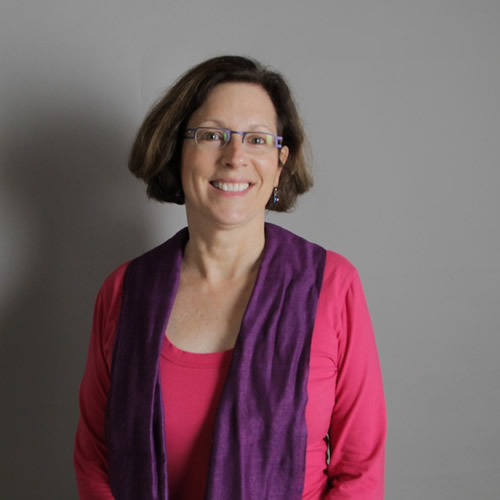
“I’m not aware of any geodesign degrees in Australia,” said King. “Online education works well for me. With my work commitments, being able to study and complete assignments when I have time is the best option. I currently have one class meeting each week, which is fine. But more than that would be a challenge.”
What Is Geodesign?
In its broadest sense, geodesign [PDF] combines the art of design with the science of geography. Using stakeholder input, creative design techniques, rigorous methodologies, and spatial analysis and mapping, a geodesign practitioner can find the most suitable, environmentally friendly, and sustainable options for how to use space. That may be space for development, agriculture, wildlife conservation, transportation or flood control systems, marine protected areas, and so on.
The geodesign technologies used in these programs, including Esri ArcGIS for Desktop, GeoPlanner for ArcGIS, and ArcGIS Online, help students analyze data and then visualize the impacts of their designs.
Interest in geodesign has spiked in the last several years. This is evidenced by more schools like Penn State offering geodesign degrees or certificates, including the University of Southern California (USC) and the University of Wisconsin, Madison. (View a map of where some of the geodesign education programs are being offered in the United States.) Also, the Geodesign Summit, held once a year at Esri headquarters in Redlands, California, attracts hundreds of people, and the annual Geodesign Summit Europe also is well attended.
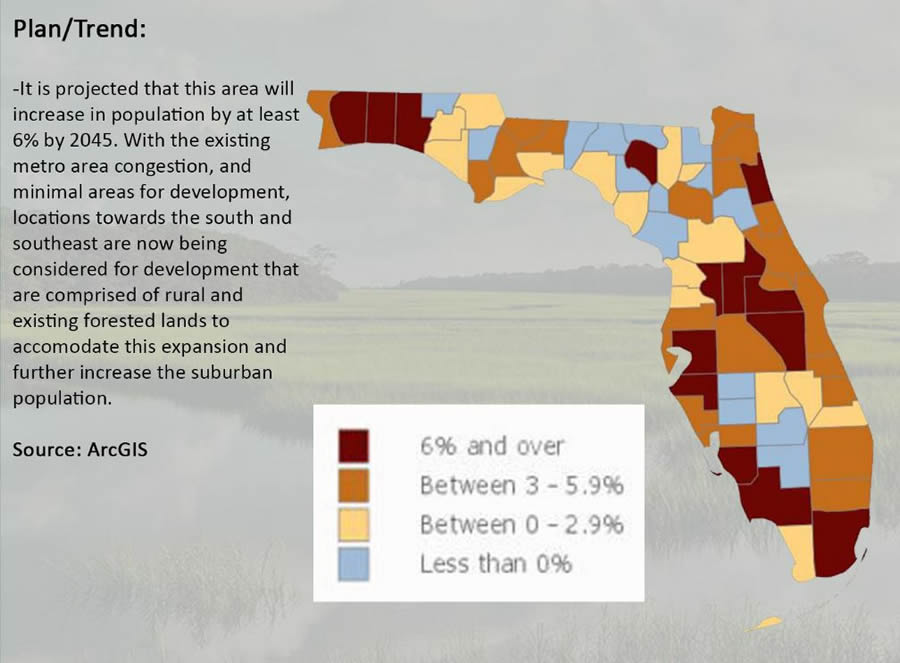
This surge in interest is due, in part, to concern about the effects of climate change, such as sea level rise and drought; limited availability of land for development; the need to protect environmentally sensitive areas; and a desire to launch mass transit projects such as passenger rail service to reduce the carbon footprint. Issues like these are spurring more communities and organizations to plan smartly and sustainably.
“Geodesign means using GIS and other predictive models to help make decisions about how you design the landscape,” said Dan Meehan, geodesign program manager for Penn State. “You have a problem and you need to address it and fix it. If you propose a fix, what are the impacts on all the different systems—not only physical systems [such as transportation] but cultural systems, political systems, and ecological systems?”
Geodesign is about trying to make sense out of what is often a huge amount of data related to a planning issue—asking a lot of key questions, creating multiple design iterations, and testing them before reaching a consensus with stakeholders about which solution to implement.
“There is so much information out there, but we are not doing a very good job designing places and planning for conservation and all these things we need to do on the land,” said Foster. “So there is a need to have a design process to understand what data you need and who you need to work with to have successful planning solutions, no matter what land planning and design challenge you face.”
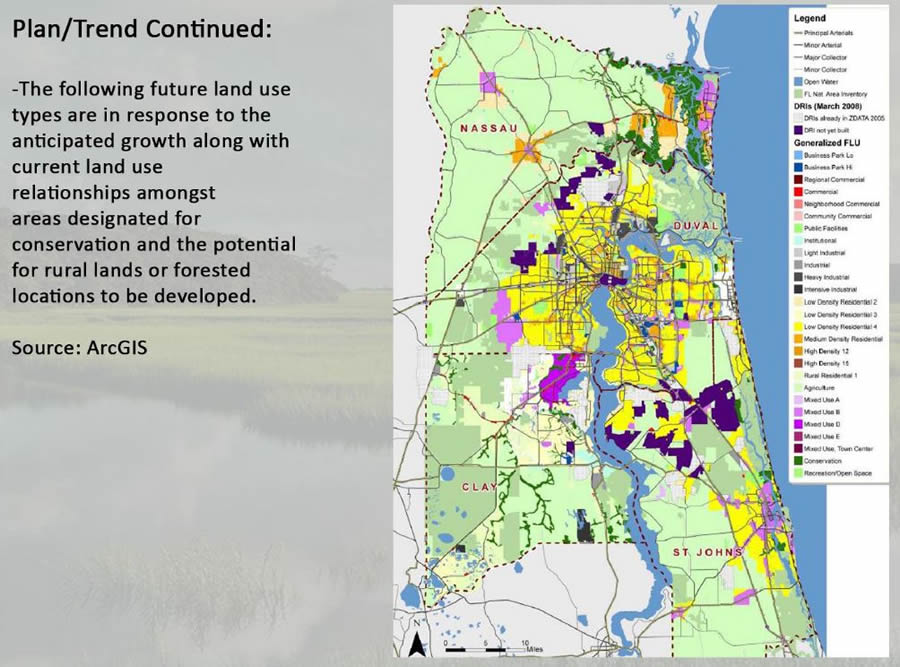
Real-World Geodesign
The challenges are many. And the students get to dive in and work on scenarios based on real-world issues that cry out for creative, thoughtful, and scientifically sound geodesign solutions. Recent class assignments have included deciding where to place transit-oriented development (TOD) in Florida and evaluating alternative routes and plans for improving US Highway 64/Corridor K in the Ocoee River Gorge area of Tennessee.
The students use GIS to evaluate their design scenarios. For example, master’s degree student Shannon McElvaney used modeling and analysis tools in ArcGIS for Desktop, ArcGIS Online, and GeoPlanner for ArcGIS to analyze where to locate TOD in Miami-Dade County, Florida, in 2040, taking into account 330,000 households that the county projects will need to be added by then and the probability of a higher sea level.
For that assignment, Penn State faculty member Michael Flaxman, who taught the master’s degree course Geodesign Studio I: Rural/Regional Challenges, stipulated that the students create TOD proposals for various areas of Florida. “[TOD means] the placement of residential and mixed-use development that decreases the total vehicle miles driven and increases the use of public transit,” said Flaxman.
The question was, “where can we grow?” said McElvaney. He had to factor in many constraints, including protecting green infrastructure and accounting for sea level rise that is projected to leave some areas near the coastline and even some land inland unsuitable for development.
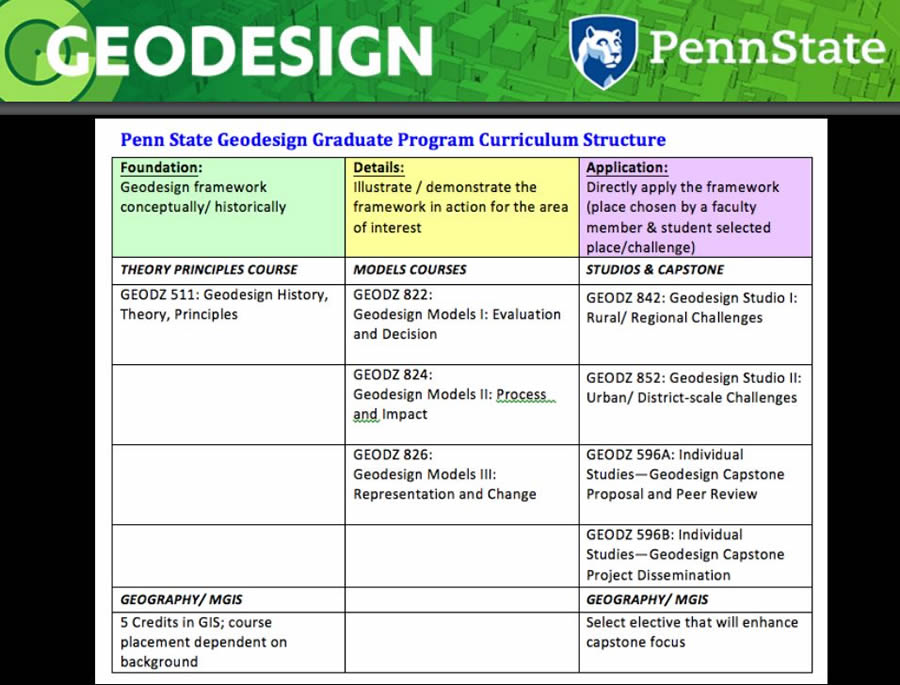
Using sea level rise projections that The Nature Conservancy provides online, McElvaney brought that data into GeoPlanner for ArcGIS and mapped it. The map he created showed the land in his study area that would be covered by water in the future due to a projected three-foot rise in sea level.
The lavender color on his map represented land that would have a 75 to 100 percent chance of being three feet under water, meaning big trouble for portions of Miami Beach and a military base to the south.
“I couldn’t believe how drastic it was and how much land it overtook,” McElvaney said during his final presentation, which the faculty and his classmates all participated in online. “You could see [how] it started to creep in on the agricultural area . . . so suddenly [where it] looked like we could back away from the coast and develop more inland [but that land] also gets inundated.”
McElvaney finally decided it would be smarter to develop a bus rapid transit (BRT) system farther inland and create mixed-use development along that route rather than putting in a fixed rail system that may be threatened by the rising sea level.
“I love fixed rail, but it’s going to be dangerous to invest money in it along the coast,” he said.
Flaxman said he was impressed with the work done by McElvaney and the other students in the class. “The primary [objective] was to become comfortable with large problems and large spatial scales,” said Flaxman, who also has taught at Massachusetts Institute of Technology (MIT) and owns Geodesign Technologies Inc. in Berkeley, California.
The students, Flaxman said, had to understand their assigned regions’ plans and trends and then strategically intervene to improve the plans. “They came up with some good design solutions that faculty wouldn’t have thought of,” Flaxman said.
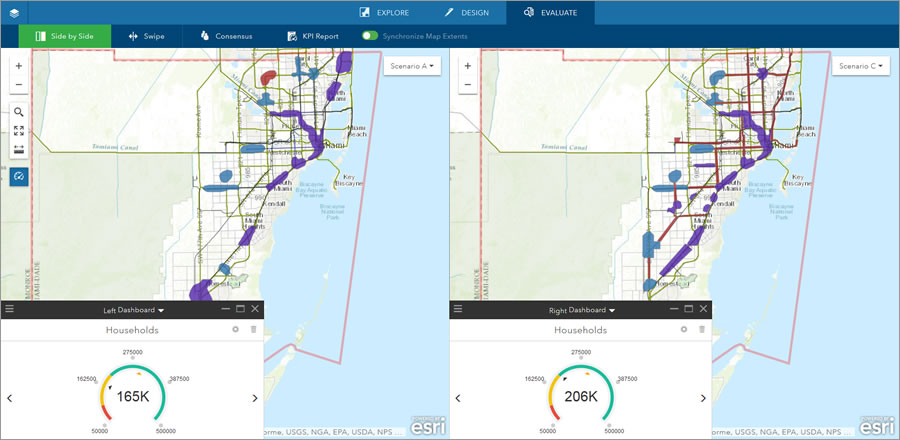
The People of the Place
One of the required textbooks in Penn State’s geodesign program is A Framework for Geodesign: Changing Geography by Design, authored by Carl Steinitz, professor emeritus of landscape architecture and planning at the Harvard Graduate School of Design, and published by Esri.
Steinitz’s framework for the geodesign process is shaped by a set of six key questions: How should the landscape/study area be described? How does the landscape/study area function? Is the current landscape/study area working well? How might the landscape/study area be altered? What difference might the changes cause? How should the landscape/study area be changed?
Foster said she was inspired to start the geodesign program after seeing Steinitz’s geodesign framework in action when he was a visiting professor, serving as Penn State’s Eleanor R. Stuckeman chair of design in the fall of 2011. He taught a geodesign studio, and Foster said she was impressed with how well the process worked.
“I was sold,” she said. “Students accomplished more in four or five weeks than they typically do in a 15-week semester.”
According to Steinitz, those affected by any proposed design change—he calls them “the people of the place”—should have input in the process.
That’s what the Penn State students learn how to do in another course, Geodesign Models I: Evaluation and Decision. Students in that class are asked to tackle another real-world conundrum involving a portion of Corridor K, a proposal to improve the highway system that stretches from Cleveland, Tennessee, to Dillsboro, North Carolina. Officials are weighing several design alternatives as they try to meet transportation needs while protecting an environmentally sensitive area called the Ocoee River Gorge.
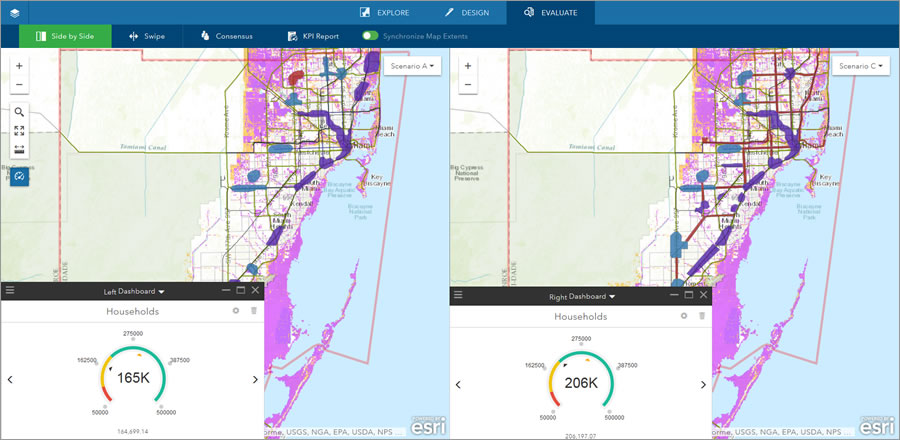
While evaluating the different route options (which includes building a six-mile tunnel under the Cherokee National Forest), each student takes on the persona of a stakeholder such as a trucker and a hiker, states opinions about the alternatives, and then negotiates, said Meehan.
In this way, the students learn how to include the people of the place in the design process.
“An important part of our program is the people part,” Foster said. “If you are going to design something on the land and you are not accounting for all the different interests, issues, and values that people hold for the place . . . you are not going to get very far with the project.”
A Well-Rounded Education
The Penn State geodesign program is not meant so much to turn out a cadre of geodesigners as it is to give people in their chosen professions the skills to lead a geodesign process, according to Foster.
“They don’t have to be a GIS expert. They have to understand GIS,” Foster said. “They don’t have to be a design expert, [but] they have to understand the design process.”
Flaxman agrees. “Those with the [geodesign] training are going to do their traditional jobs better,” he said.
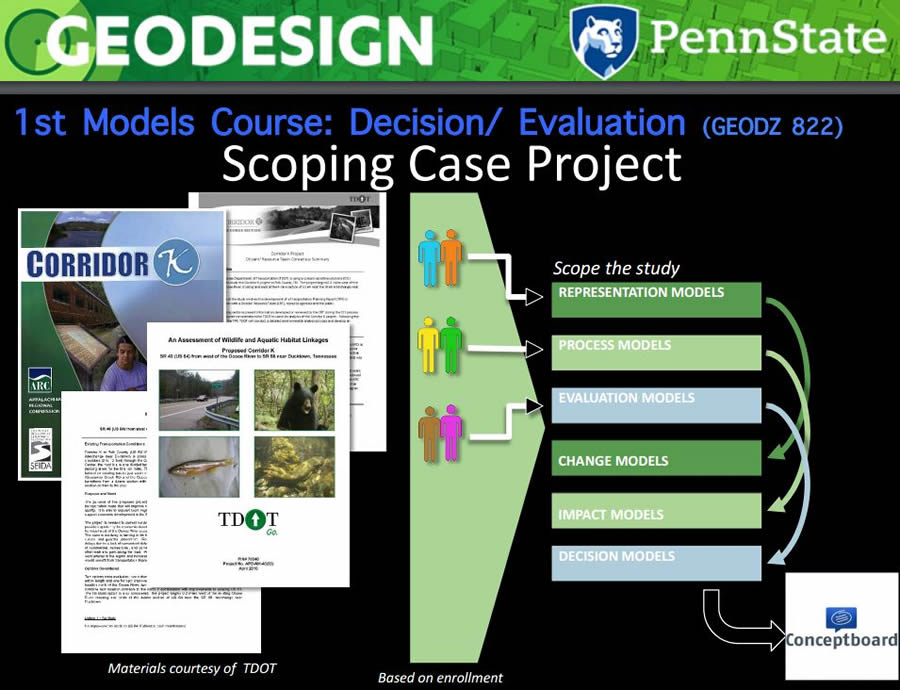
Both the certificate and master’s degree programs require geography courses as needed, along with classes on geodesign history, theory, principles, and models. The master’s degree students also take Geodesign Studio I and II and complete a capstone experience that involves preparing a student-selected, peer-reviewed geodesign project and then either present it in a formal venue such as a conference or author an article about it for a professional publication.
Whether students leave the Penn State World Campus with a master’s degree or certificate, Foster hopes they will carry with them a thorough understanding of a design process that includes gathering input from stakeholders, obtaining and analyzing data related to the issue, evaluating design proposals, and studying the consequences and implications of each proposal based on a set of criteria that is established early on in the process.
“What I think is so powerful about geodesign is [that] once you know this process, it’s transportable,” said Foster. “You can apply it to many different situations. And even as the technology changes and evolves—which it does, every year—you will know how to plug the newest technology and newest ways to acquire the data into this framework in order to go forward with decision-making and [getting] the rapid feedback on the impacts and potential consequences.”
The days of working in a vacuum on a design project without collaborating with the public, decision-makers, and experts in other fields are long gone.
“That is so old school, especially with place-based projects,” she said. “You have to be able to understand how to work with a variety of people. To ask the right questions and get the right information from them is essential to the outcome.”
Otherwise, design proposals can turn into dinosaurs. “We have a lot of beautiful plans that sit on shelves because they weren’t part of a process that people were brought into and [where people] understood the value of the outcome,” Foster said.
For more information about the Penn State Master of Professional Studies in Geodesign and Graduate Certificate in Geodesign programs, visit worldcampus.psu.edu/geodesign or contact Kelleann Foster at geodesign@psu.edu. Foster also will be available to answer questions during the Geodesign Summit, which will be held January 24 to 26, 2017, in Redlands, California. She will be a featured speaker at the summit.

